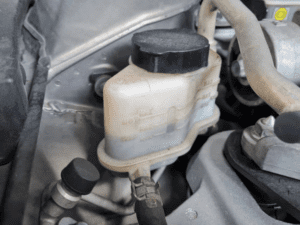
Table of Contents
Hydraulic brake bleed.
Well, then you must read this short and simple article to know what is the reason behind the brake’s inefficiency.
Are your brakes feeling spongy or not as responsive as they used to be? It may be time for a hydraulic brake bleed! It is an important maintenance task that ensures your brakes are operating efficiently and safely. In this article, we’ll explain what brake bleeding is, the signs that you need to do it, and the steps involved in performing a brake of bleed.
What is it?
It is the process of removing air bubbles from the hydraulic brake system. Over time, air can enter the system, reducing the efficiency of the brakes. When you press the brake pedal, the air compresses, making it feel spongy and less responsive. Bleeding the brakes restores the brake system’s hydraulic pressure, making the brakes feel firmer and more responsive.
Signs that show you must bleed the brake.
Signs that you need to bleed your brakes include a spongy or unresponsive brake pedal, the pedal going all the way to the floor, or if the brakes have not been bled in a long time.
Tools required
To perform a brake bleed, you’ll need a few tools, including a brake bleeder kit, a wrench to loosen and tighten the bleeder valve, a container to catch the old brake fluid, and fresh brake fluid to refill the system. The brake bleeder kit typically includes a clear plastic tube, a rubber cap to fit over the bleeder valve, and a squeeze bottle to create suction in the system.
6 Basic steps to perform.
The basic steps for bleeding brakes are as follows:
- Start with the brake farthest from the master cylinder (usually the rear brakes).
- Loosen the bleeder valve on the brake caliper or wheel cylinder and attach the clear plastic tube to the valve.
- Place the other end of the tube in the container to catch the old brake fluid.
- Use the brake bleeder kit to create suction in the system and force the old brake fluid out through the clear tube.
- Tighten the bleeder valve and refill the brake fluid reservoir with fresh fluid.
- Repeat the process for each brake, working your way closer to the master cylinder.
Brake bleeding may seem intimidating, but it’s an important part of maintaining your vehicle’s brakes. With the right tools and a little patience, you can easily perform a brake bleed yourself and keep your brakes in top condition.
When should you do this (Interval)
It is recommended to bleed your brakes every 2-3 years, or whenever you notice any signs of air in the system or decreased brake performance. However, if you frequently drive in harsh conditions or use your brakes aggressively, you may need to bleed them more frequently. Consult your vehicle’s owner’s manual for specific recommendations on brake bleeding intervals.
Brake bleeding cost in the US
The cost of a brake bleeding service in the US varies depending on the make and model of your vehicle, as well as the location and the mechanic you choose. On average, a brake bleeding service can cost anywhere from $75 to $200. However, if you choose to do it yourself, the cost of a brake bleeder kit and fresh brake fluid can range from $20 to $60. Keep in mind that the cost of not properly maintaining your brake system can be much higher, as poorly maintained brakes can lead to accidents and costly repairs.

Cost of Brake fluid in the US
The cost of brake fluid in the US varies depending on the brand and type of fluid you choose. Generally, a 32-ounce bottle of DOT 3 or DOT 4 brake fluid can cost between $5 and $15. Some premium brake fluids can cost more, typically between $20 and $30 per bottle. Keep in mind that you should always use the brake fluid recommended for your vehicle by the manufacturer, and never mix different types of brake fluid. Additionally, brake fluid should be stored in a cool, dry place and should be replaced every 2-3 years, even if you haven’t used the whole bottle.
CMBS: Collision Mitigation Braking System- A SAFETY FEATURE – TheAutoEngineer.com
